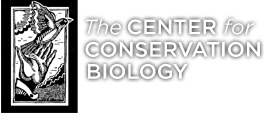Objectives:
Initiated by the National Audubon Society to determine the status of the population within a recognized stronghold during a time of decline, objectives for the survey have evolved over time. Current objectives include 1) to document the status, distribution, and productivity of breeding bald eagles, 2) to provide information to government agencies charged with the management of protection of bald eagles, 3) to provide information to land owners about the status of bald eagles on their properties, and 4) to increase our understanding of bald eagle natural history.
[easy_image_gallery]
Project Description:
The Virginia Bald Eagle Survey is a national treasure. The survey has become one of the most significant serial data sets in the world. For more than 55 years, the survey has documented biocide-induced reproductive suppression, the resulting population low, and a dramatic recovery in both reproductive rates and the overall population following the ban of DDT and like compounds. More than population information alone, the effort has produced a wealth of ecological information on a population recovering within an increasingly human-dominated landscape. It has become one of the best records of arguably the greatest conservation achievement in our nation’s history. Survey information is used by an entire community of government agencies, NGOs, environmental consulting firms, and landowners. Since the initiation of the annual survey in 1956 the effort has performed more than 25,000 nest checks and documented more than 8,000 breeding attempts. Since 1962 the survey has been an aerial survey measuring breeding activity and productivity via a standard 2-flight approach. The first flight is conducted between late February and mid-March to locate active nests. A high-wing Cessna 172 aircraft is used to systematically overfly the land surface at an altitude of approximately 100 m to detect eagle nests. All bald eagle nests detected are plotted on 7.5 min topographic maps and given a unique alpha-numeric code. Each nest is examined to determine its condition and activity status. The second survey flight is conducted from late April through mid-May to check active nests for productivity. Since 2009 survey results have been provided online in an effort to make results more available to the conservation community and to the general public.
Years: 1956 – Present
Status: Ongoing
Project Partners: Virginia Department of Game and Inland Fisheries, United States Fish and Wildlife Service, United States Geological Survey, United States Park Service, Army Corps of Engineers, National Park Service, Virginia Society of Ornithology
CCB Staff: Bryan Watts, Mitchell Byrd, Libby Mojica, Reese Lukei, Bart Paxton
Project Contact: Bryan Watts bdwatt@wm.edu (757) 221-2247
Publications:
Watts, B. D. 2010. The Virginia Bald Eagle Survey: A history. The Raven 81:5-7.
Data:
View Eagle Nest Locator data in the CCB Mapping Portal.
Related Links:
More information on the Virginia breeding bald eagle annual survey.
More information on the Eagle Nest Locator.
